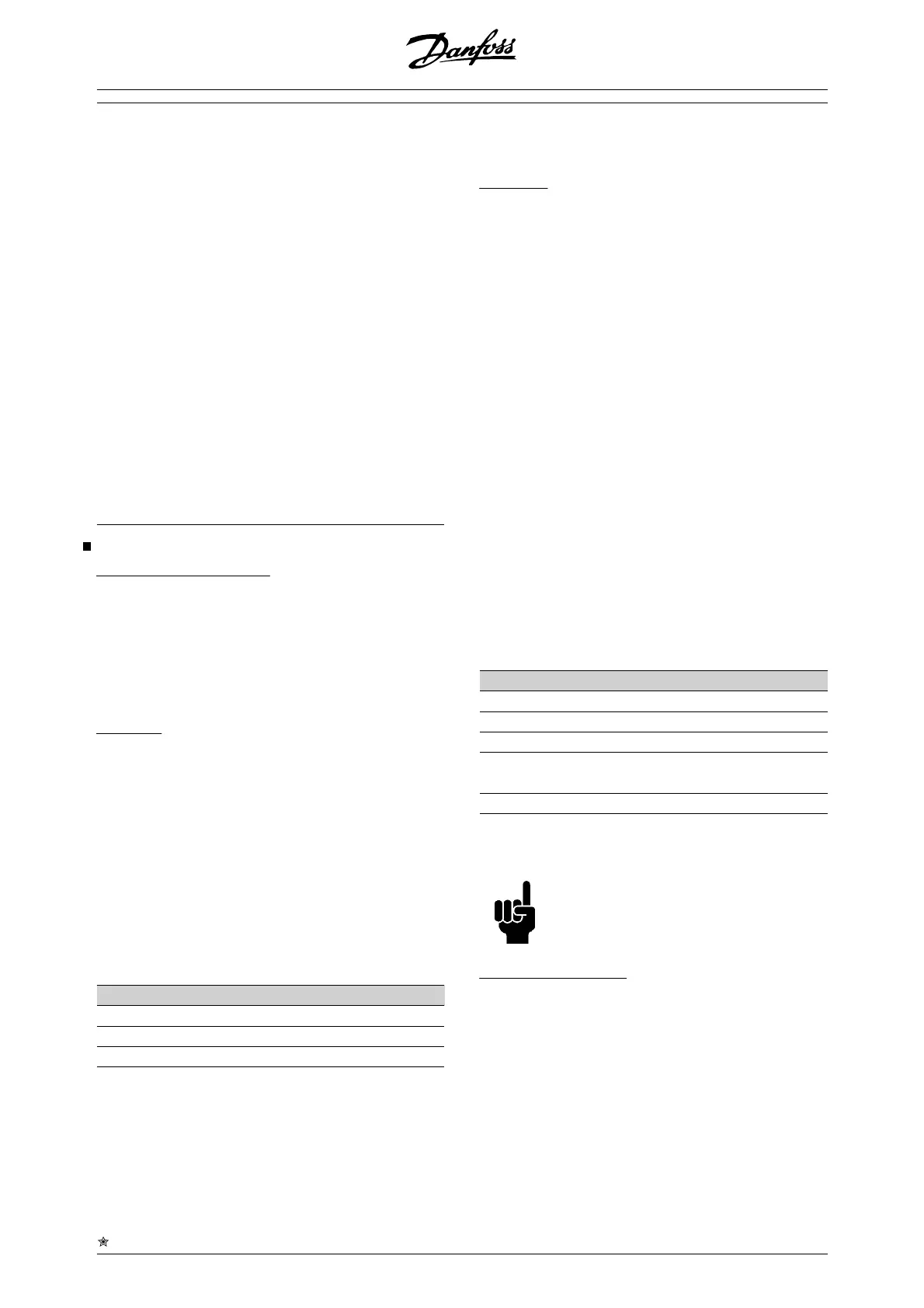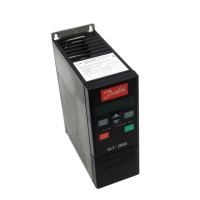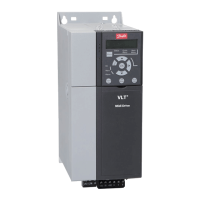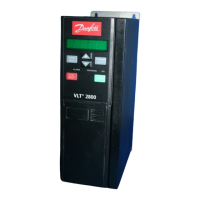process's actual mode. The feedback signal varies as
the process load varies.
This means that there is a variance between the ref-
erence/setpoint and the actual process mode. This
variance is compensated by the PID regulator by
means of the output frequency being regulated up or
down in relation to the variance between the reference/
setpoint and the feedback signal.
The integrated PID regulator in the frequency convert-
er has been optimised for use in process applications.
This means that there are a number of special func-
tions available in the frequency converter.
Previously it was necessary to obtain a system to han-
dle these special functions by installing extra I/O mod-
ules and programming the system. With the frequency
converter the need to install extra modules can be
avoided. The parameters that are specific to the Proc-
ess Regulator are parameter 437 to parameter 444.
PID functions
Unit of reference/feedback
When Speed regulation, closed loop is selected in pa-
rameter 100 Configuration the unit of reference/feed-
back is always rpm.
When Process regulation, closed loop is selected in
parameter 100 Configuration the unit is defined in pa-
rameter 416 Process units.
Feedback
A feedback range must be preset for both regulators.
At the same time this feedback range limits the poten-
tial reference range so that if the sum of all references
lies outside the feedback range, the reference will be
limited to lie within the feedback range.
The feedback signal must be connected to a terminal
on the frequency converter. If feedback is selected on
two terminals simultaneously, the two signals will be
added together.
Use the overview below to determine which terminal is
to be used and which parameters are to be program-
med.
Feedback type Terminal Parameters
Pulse 33 307, 327
Voltage 53 308, 309, 310
Current 60 314, 315, 316
A correction can be made for loss of voltage in long
signal cables when a transmitter with a voltage output
is used. This is done in parameter group 300 Min./Max
scaling.
Parameters 414/415 Minimum/Maximum feedback
must also be preset to a value in the process unit cor-
responding to the minimum and maximum scaling val-
ues for signals that are connected to the terminal.
Reference
In parameter 205 Maximum reference, Ref
MAX
it is pos-
sible to preset a maximum reference that scales the
sum of all references, i.e. the resulting reference.
The minimum reference in parameter 204 is an ex-
pression of the minimum value that the resulting ref-
erence can assume.
All references will be added together and the sum will
be the reference against which regulation will take
place. It is possible to limit the reference range to a
range that is smaller than the feedback range. This can
be an advantage if you want to avoid an unintentional
change to an external reference making the sum of the
references move too far away from the optimal refer-
ence. The reference range cannot exceed the feed-
back range.
If preset references are desired, they are preset in pa-
rameters 215 to 218 Preset reference. See description
Reference Function and Handling of References.
If a current signal is used as the feedback signal, it will
only be possible to use voltage as an analogue refer-
ence. Use the overview below to determine which
terminal is to be used and which parameters are to be
programmed.
Reference type Terminal Parameters
Pulse 33 307, 327
Voltage 53 308, 309, 310
Current 60 314, 315, 316
Preset
references
215-218
Bus reference 68+69
Note that the bus reference can only be preset via se-
rial communication.
NB!
It is best to preset terminals that are not
being used to No function [0].
Differentiator gain limit
If very rapid variations occur in an application in either
the reference signal or the feedback signal, the devi-
ation between the reference/setpoint and the proc-
ess's actual mode will change quickly. The differentia-
tor can then become too dominant. This is because it
is reacting to the deviation between the reference and
the process's actual mode, and the quicker the var-
iance changes the more powerful the differentiator's
frequency contribution becomes. The differentiator's
frequency contribution can therefore be limited in such
a way that both a reasonable differentiation time for
= factory setting, () = display text, [] = value for use in communication via serial communication port
98 MG.27.E2.02 - VLT is a registered Danfoss trademark
